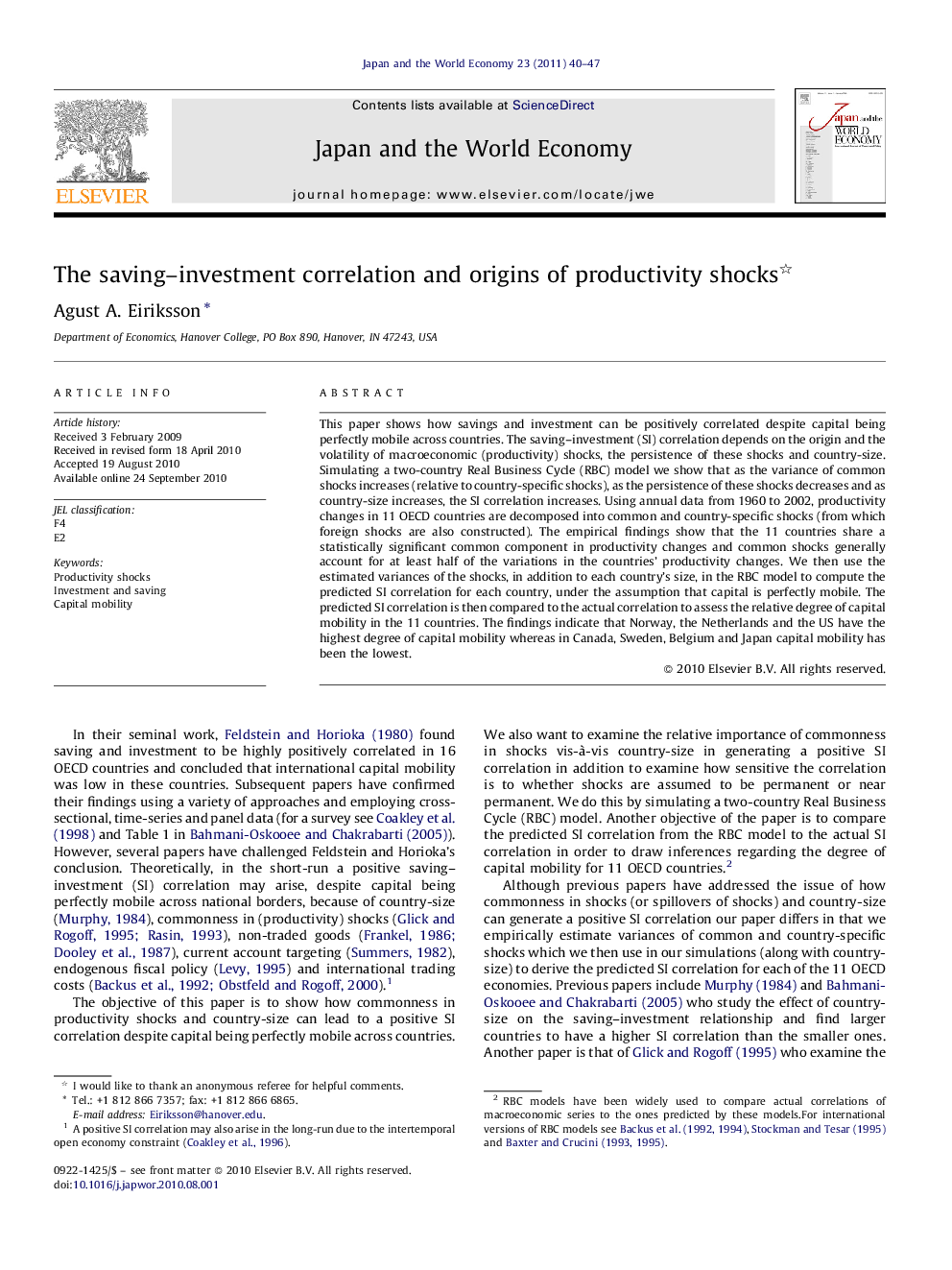| Article ID | Journal | Published Year | Pages | File Type |
|---|---|---|---|---|
| 5086271 | Japan and the World Economy | 2011 | 8 Pages |
Abstract
This paper shows how savings and investment can be positively correlated despite capital being perfectly mobile across countries. The saving-investment (SI) correlation depends on the origin and the volatility of macroeconomic (productivity) shocks, the persistence of these shocks and country-size. Simulating a two-country Real Business Cycle (RBC) model we show that as the variance of common shocks increases (relative to country-specific shocks), as the persistence of these shocks decreases and as country-size increases, the SI correlation increases. Using annual data from 1960 to 2002, productivity changes in 11 OECD countries are decomposed into common and country-specific shocks (from which foreign shocks are also constructed). The empirical findings show that the 11 countries share a statistically significant common component in productivity changes and common shocks generally account for at least half of the variations in the countries' productivity changes. We then use the estimated variances of the shocks, in addition to each country's size, in the RBC model to compute the predicted SI correlation for each country, under the assumption that capital is perfectly mobile. The predicted SI correlation is then compared to the actual correlation to assess the relative degree of capital mobility in the 11 countries. The findings indicate that Norway, the Netherlands and the US have the highest degree of capital mobility whereas in Canada, Sweden, Belgium and Japan capital mobility has been the lowest.
Keywords
Related Topics
Social Sciences and Humanities
Economics, Econometrics and Finance
Economics and Econometrics
Authors
Agust A. Eiriksson,
